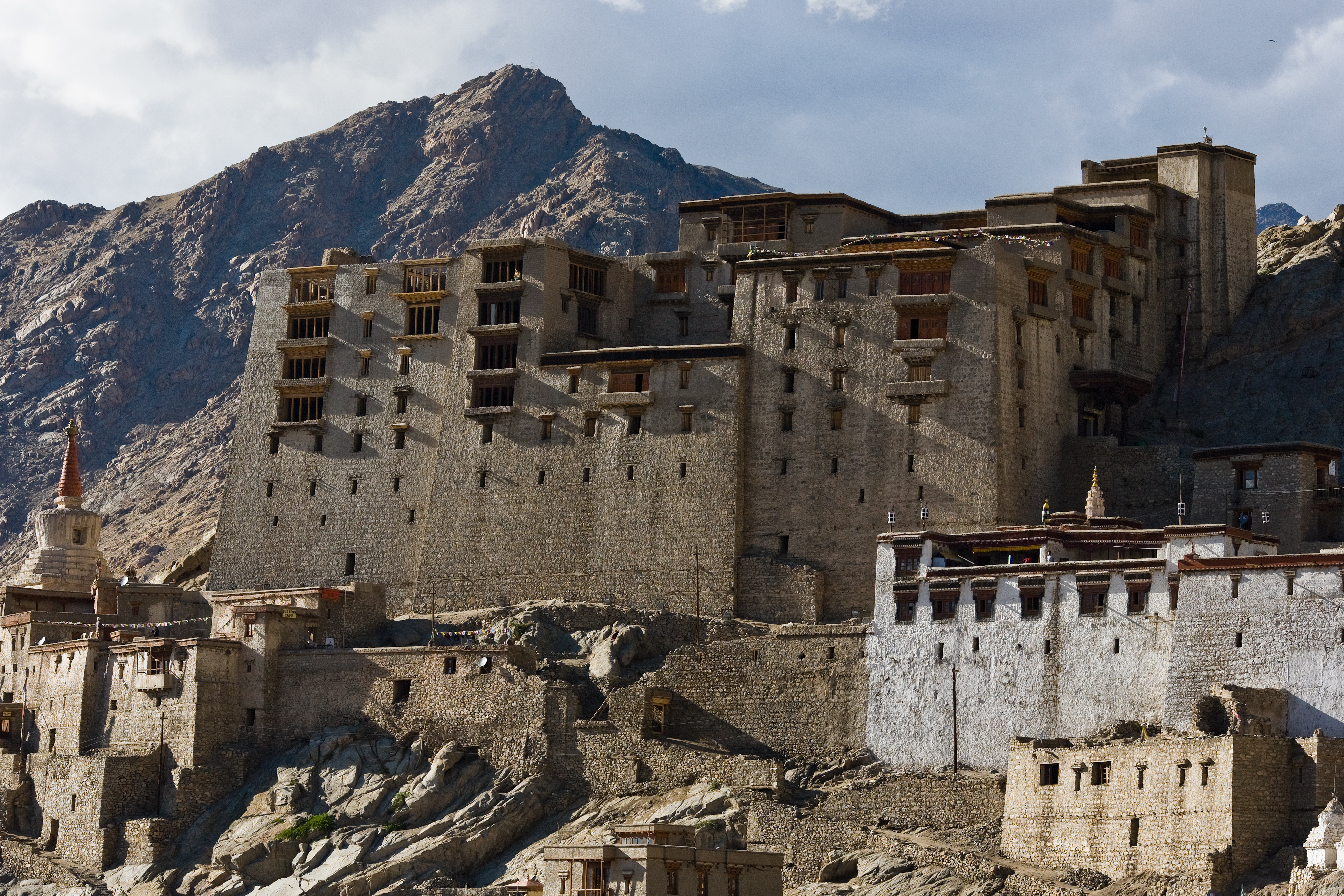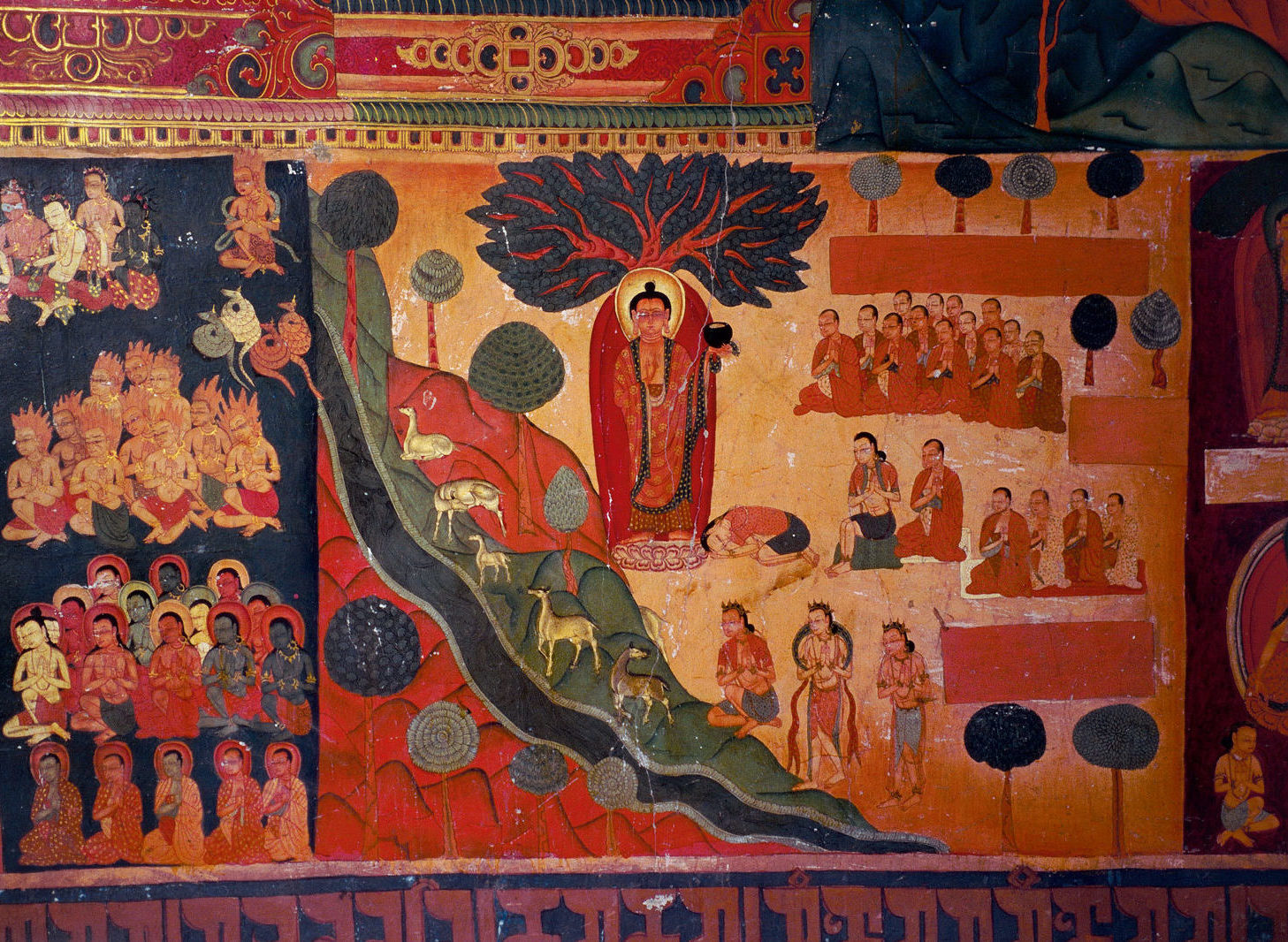|
Sengge Namgyal
Sengge Namgyal (''Sen-ge-rnam-rgyal'', c. 1570–1642) was a 17th-century Namgyal dynasty King of Ladakh, India from 1616 to his death in 1642. A Buddhist, he was noted for his immense work in building monasteries, palaces and shrines in Ladakh and is known as the "Lion King". Biography Sengge was born to Jamyang Namgyal Jamyang Namgyal (died 1616) was a 17th-century Namgyal dynasty king (''gyalpo'') of Ladakh, India from 1595 till his death in 1616 AD. He was succeeded by his son Sengge Namgyal in the year 1616 AD. Biography Jamyang Namgyal was born to and w ... and a Balti mother, Gyal Khatun. He was a devout Buddhist. In his youth, he showed great martial skill and a flair for command. Talents which got him the command of the army. In 1614, he captured the mining town of Rudok followed by Spurangs, another important gold mining town, in 1615. The plunder and the output from these towns financed the building projects he would later commission as the King. In 1616, on ... [...More Info...] [...Related Items...] OR: [Wikipedia] [Google] [Baidu] |
Jamyang Namgyal
Jamyang Namgyal (died 1616) was a 17th-century Namgyal dynasty king (''gyalpo'') of Ladakh, India from 1595 till his death in 1616 AD. He was succeeded by his son Sengge Namgyal in the year 1616 AD. Biography Jamyang Namgyal was born to and was the eldest son of Tsewang Namgyal who was the king of Ladakh from 1575 to 1595 AD. Jamyang Namgyal took the reign of the Namgyal dynasty of Ladakh in 1595 AD and continued to be in power until his death in 1616 AD. Jamyang Namgyal was married to ''Gyal Khatun'', the daughter of Ali Sher Khan Anchan who attacked Ladakh and imprisoned Namgyal. Battle with Ali Sher Khan Anchan Jamyang Namgyal during his reign decided to support the Sultan of Chigtan and to capture Skardu. Namgyal's army was crossing the mountain passes towards Purig during the winter season where his troops disappeared due to violent storm. Ali Sher Khan Anchan's well trained army attacked Namgyal's army on the way and held them there until all the passes and valleys were ... [...More Info...] [...Related Items...] OR: [Wikipedia] [Google] [Baidu] |
Deldan Namgyal
The Namgyal dynasty was a dynasty whose rulers were the monarchs of the former kingdom of Ladakh that lasted from 1460 to 1842 and were titled the Gyalpo of Ladakh. The Namgyal dynasty succeeded the Maryul#First dynasty (930–1460), first dynasty of Maryul and had several conflicts with the neighboring Mughal Empire and various dynasties of Tibet, including the Tibet–Ladakh–Mughal War. The dynasty eventually fell to the Sikh Empire and Dogras of Jammu and Kashmir (princely state), Jammu and Kashmir. Most of its known history is written in the ''Ladakh Chronicles''. History Founding According to the ''Ladakh Chronicles'', the Namgyal dynasty was founded by Bhagan, the son of Bhara in the kingdom of Maryul. Bhagan was described as warlike, and established the Namgyal dynasty in 1460 after he formed an alliance with the people of Leh and dethroned the Maryul king Blo-gros-mc-og-ldan and his brothers drun-pa A-li and Slab-bstan-dar-rgyas. He took the surname Namgyal (meaning ... [...More Info...] [...Related Items...] OR: [Wikipedia] [Google] [Baidu] |
Namgyal Dynasty Of Ladakh
The Namgyal dynasty was a dynasty whose rulers were the monarchs of the former kingdom of Ladakh that lasted from 1460 to 1842 and were titled the Gyalpo of Ladakh. The Namgyal dynasty succeeded the first dynasty of Maryul and had several conflicts with the neighboring Mughal Empire and various dynasties of Tibet, including the Tibet–Ladakh–Mughal War. The dynasty eventually fell to the Sikh Empire and Dogras of Jammu and Kashmir. Most of its known history is written in the ''Ladakh Chronicles''. History Founding According to the ''Ladakh Chronicles'', the Namgyal dynasty was founded by Bhagan, the son of Bhara in the kingdom of Maryul. Bhagan was described as warlike, and established the Namgyal dynasty in 1460 after he formed an alliance with the people of Leh and dethroned the Maryul king Blo-gros-mc-og-ldan and his brothers drun-pa A-li and Slab-bstan-dar-rgyas. He took the surname Namgyal (meaning victorious) and founded a new dynasty which still survives today. Ki ... [...More Info...] [...Related Items...] OR: [Wikipedia] [Google] [Baidu] |
Buddhism
Buddhism ( , ), also known as Buddha Dharma and Dharmavinaya (), is an Indian religion or philosophical tradition based on teachings attributed to the Buddha. It originated in northern India as a -movement in the 5th century BCE, and gradually spread throughout much of Asia via the Silk Road. It is the world's fourth-largest religion, with over 520 million followers (Buddhists) who comprise seven percent of the global population. The Buddha taught the Middle Way, a path of spiritual development that avoids both extreme asceticism and hedonism. It aims at liberation from clinging and craving to things which are impermanent (), incapable of satisfying ('), and without a lasting essence (), ending the cycle of death and rebirth (). A summary of this path is expressed in the Noble Eightfold Path, a training of the mind with observance of Buddhist ethics and meditation. Other widely observed practices include: monasticism; " taking refuge" in the Buddha, the , and the ; ... [...More Info...] [...Related Items...] OR: [Wikipedia] [Google] [Baidu] |
Leh Palace 2011
Leh () ( lbj, ) is the joint capital and largest city of Ladakh, a union territory of India. Leh, located in the Leh district, was also the historical capital of the Kingdom of Ladakh, the seat of which was in the Leh Palace, the former residence of the royal family of Ladakh, built in the same style and about the same time as the Potala Palace in Tibet. Leh is at an altitude of , and is connected via National Highway 1 to Srinagar in the southwest and to Manali in the south via the Leh-Manali Highway (part of National Highway 3 connect leh). History Leh was an important stopover on trade routes along the Indus Valley between Tibet to the east, Kashmir to the west and also between India and China for centuries. The main goods carried were salt, grain, ''pashm'' or cashmere wool, '' charas'' or cannabis resin from the Tarim Basin, indigo, silk yarn and Banaras brocade. Although there are a few indications that the Chinese knew of a trade route through Ladakh to ... [...More Info...] [...Related Items...] OR: [Wikipedia] [Google] [Baidu] |
Ladakh
Ladakh () is a region administered by India as a union territory which constitutes a part of the larger Kashmir region and has been the subject of dispute between India, Pakistan, and China since 1947. (subscription required) Quote: "Jammu and Kashmir, state of India, located in the northern part of the Indian subcontinent in the vicinity of the Karakoram and westernmost Himalayan mountain ranges. From 1947 to 2019, Ladakh was part of the Indian state of Jammu and Kashmir, which has been the subject of dispute between India, Pakistan, and China since the partition of the subcontinent in 1947." Quote: "Jammu and Kashmir: Territory in northwestern India, subject to a dispute between India and Pakistan. It has borders with Pakistan and China." Ladakh is bordered by the Tibet Autonomous Region to the east, the Indian state of Himachal Pradesh to the south, both the Indian-administered union territory of Jammu and Kashmir (union territory), Jammu and Kashmir and the Pakistan-administ ... [...More Info...] [...Related Items...] OR: [Wikipedia] [Google] [Baidu] |
India
India, officially the Republic of India (Hindi: ), is a country in South Asia. It is the seventh-largest country by area, the second-most populous country, and the most populous democracy in the world. Bounded by the Indian Ocean on the south, the Arabian Sea on the southwest, and the Bay of Bengal on the southeast, it shares land borders with Pakistan to the west; China, Nepal, and Bhutan to the north; and Bangladesh and Myanmar to the east. In the Indian Ocean, India is in the vicinity of Sri Lanka and the Maldives; its Andaman and Nicobar Islands share a maritime border with Thailand, Myanmar, and Indonesia. Modern humans arrived on the Indian subcontinent from Africa no later than 55,000 years ago., "Y-Chromosome and Mt-DNA data support the colonization of South Asia by modern humans originating in Africa. ... Coalescence dates for most non-European populations average to between 73–55 ka.", "Modern human beings—''Homo sapiens''—originated in Africa. Then, int ... [...More Info...] [...Related Items...] OR: [Wikipedia] [Google] [Baidu] |
Buddhist
Buddhism ( , ), also known as Buddha Dharma and Dharmavinaya (), is an Indian religion or philosophical tradition based on teachings attributed to the Buddha. It originated in northern India as a -movement in the 5th century BCE, and gradually spread throughout much of Asia via the Silk Road. It is the world's fourth-largest religion, with over 520 million followers (Buddhists) who comprise seven percent of the global population. The Buddha taught the Middle Way, a path of spiritual development that avoids both extreme asceticism and hedonism. It aims at liberation from clinging and craving to things which are impermanent (), incapable of satisfying ('), and without a lasting essence (), ending the cycle of death and rebirth (). A summary of this path is expressed in the Noble Eightfold Path, a training of the mind with observance of Buddhist ethics and meditation. Other widely observed practices include: monasticism; " taking refuge" in the Buddha, the , and th ... [...More Info...] [...Related Items...] OR: [Wikipedia] [Google] [Baidu] |
Hamis Gonpa On A Rainy Day
Khames ( fa, خمس, also Romanized as Khemes; also known as Hamis and Khyms) is a village in Khanandabil-e Sharqi Rural District, in the Central District of Khalkhal County, Ardabil Province, Iran Iran, officially the Islamic Republic of Iran, and also called Persia, is a country located in Western Asia. It is bordered by Iraq and Turkey to the west, by Azerbaijan and Armenia to the northwest, by the Caspian Sea and Turkmeni .... At the 2006 census, its population was 1,051, in 295 families. References External links Tageo Towns and villages in Khalkhal County {{Khalkhal-geo-stub ... [...More Info...] [...Related Items...] OR: [Wikipedia] [Google] [Baidu] |
Tsaparang
Tsaparang was the capital of the ancient kingdom of Guge in the Garuda Valley, through which the upper Sutlej River flows, in Ngari Prefecture (Western Tibet) near the border of Ladakh. It is 278 km south-southwest of Senggezangbo Town and 26 km west of the 11th-century monastery at Tholing, and not far west of Mount Kailash and Lake Manasarovar. The Tsaparang Dzong was located here. Nearby is the Bon monastery of Gurugem. Tsaparang is a huge fortress perched on a pyramid-shaped rock rising about 500 to 600 feet (152 to 183 m) at the end of a long narrow spur. It contains numerous tunnels and caves that have been carved out of the rock. At its base was a village where the common people lived. Above them were two public temples - the Lhakhang Marpo (Red Chapel) and the Lhakhang Karpo (White Chapel), and quarters for the monks. Further up, ascending a twisting stone staircase in a tunnel, were the royal quarters, and at the very top, the summer palace. The English TV pr ... [...More Info...] [...Related Items...] OR: [Wikipedia] [Google] [Baidu] |


.jpeg/1200px-Beautiful_Leh_Couple_In_Traditional_Dress_(202673443).jpeg)

